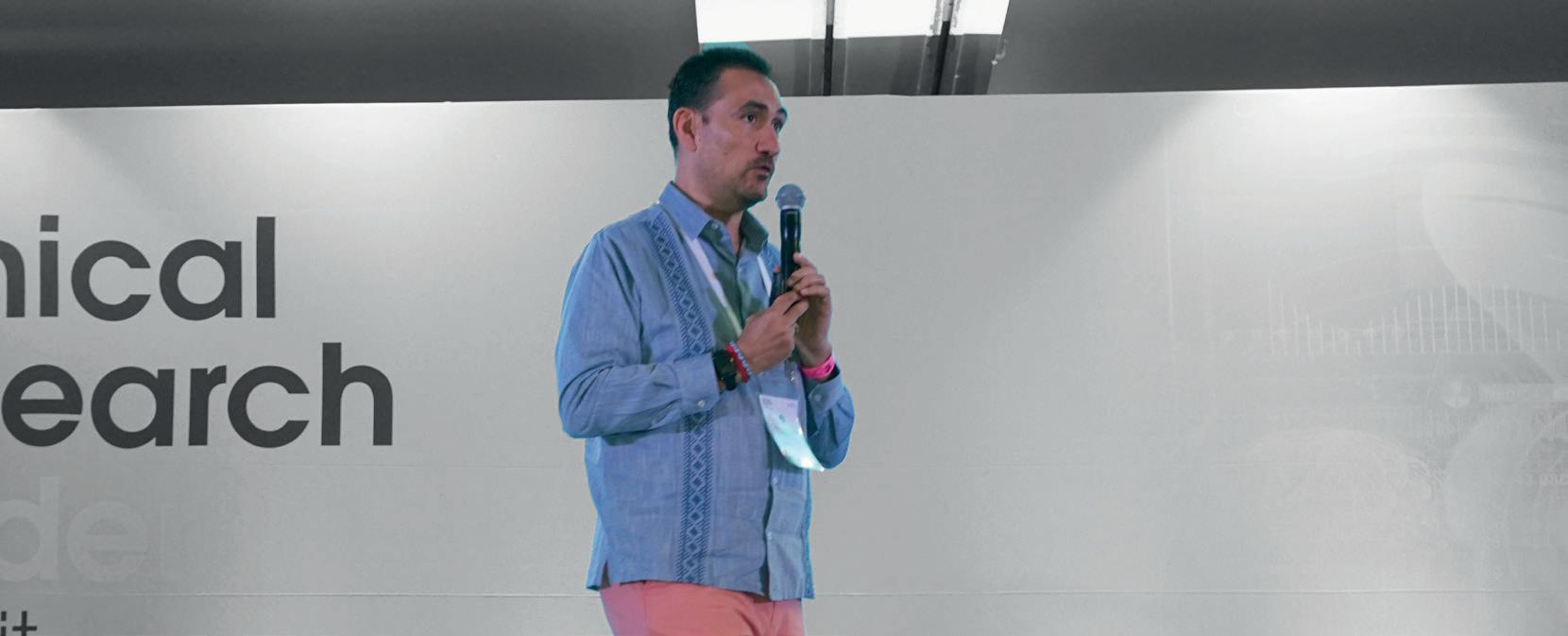
5 minute read
Clinical Research Insider Summit No. 11
The ideal clinical study: dream possible or fairy tale?
Advertisement
-Julio Verne
For those of us have worked in the generation of evidence and clinical trials for a long time, we know how complex it can be to reach a conclusion and publish it. But none of this is new. The first clinical study as we know it today was conducted by Dr. James Lind in England in 1747. Your objective was to learn about the importance of citrus fruits in the prevention of scurvy. The result was key for understanding the cause of the disease as well as its treatment. This fact opened up the possibility of continuing to make long-distance sea voyages. Thanks to him, International Clinical Trials Day is celebrated every May 20.
But unfortunately, it doesn’t always have a happy ending, as it would in a fairy tale. To put it in context, out of more than 10,000 molecules that are candidates to become a drug that goes on sale to the public, only one will make it. The complete development process of a new molecule can take anywhere from 10 to 15 years, counting from the early research phase through to application in human clinical trials (phases I to III).
This is not the only unoptimistic figure. It’s mentioned that up to 90% of the processes do not reach a successful conclusion. It is worth mentioning here that this is due to various factors and different stages of research development. So we can divide the cases of failure between those caused by the product under development itself and what happens during the human clinical trial phases.
The literature mentions that among the main causes of failure of the product under development to reach term and subsequent commercialization is the lack of clinical efficacy (40-50%) as the main factor, which is generated due to failures in the early stages of the search for the ideal product for the desired disease.
In the second place, it mentions the toxicity it produces (30%) because it is often not easy to extrapolate what happens in vitro or animal studies with what happens in a more complex organism such as ours. In third place, we have the properties of the drug (10-15%) related to mechanisms such as solubility and bioavailability. And lastly, poor strategic planning (10%) on the part of the sponsor.
Speaking of the failures during clinical studies, in chronological order, we will talk about the difficulty of enrolling healthy subjects in phase I studies; there is not much data reported, but the percentage of inclusion vs. expected is so low (in China it is mentioned in a review of studies that the average success rate was only 27.8%). The success of enrollment can determine the quality of the clinical trial; low recruitment can lead to the study being canceled or not progressing to the clinical trial, in addition to the impact on the resources and money invested.
These problems are also present in phases II and III, where other types of reasons are observed, among which are the budget for the project (financial), those related to the study itself (delays in starting, lack of interest of the subjects, etc.), the design itself (unclear or relevant objectives) and those related to the work team, which can be as simple or as complex depending on the type of study, such as lack of education and/ or training, rotation, work overload, etc. Finally, some of the biggest conflicts are those related to the subjects, the most important part of the study, due to the interest or benefit for them to participate in the research study.

As illustrated in the graphic above, there are many areas and parties involved, from design and basic research to the implementation of the clinical study in its phases with humans. Each of those involved has specific responsibilities in getting that research product to the final stage and seeing it on pharmacy shelves for the benefit of patients.
Finally, I don’t believe that there has ever been an ideal clinical trial since each one is made for and by human beings, which immediately gives it the status of imperfection. There are still many things to continue working on in the different stages of the development of a new molecule. We must learn from our mistakes and have increasingly skilled and interrelated teams for the conduct of clinical studys.
Luis Fernando Tejado Gallegos PhD

Generation Lead LATAM; Clinical Trials Medical Manager at AstraZeneca, Mexico.
References
Duxin S. et al. 2022. Why 90% of Clinical drug development fails and how to improve it. Acta Pharmaceutica Sinica B. 12 (7) : 3049-3062 Hongmin L. et al. 2022. A retrospective study: screening failure analysis of 1,058 healthy volunteers in phase I clinical trials. Annals of Palliative Medicine. 11 (7): 2464-2477
Briel M. et al . 2022. Exploring reasons for recruitment failure in clinical trials: a qualitative study with Clinical trial stakeholders in Switzerlad, Germany and Canada. BMC Open Access. 22 : 844










